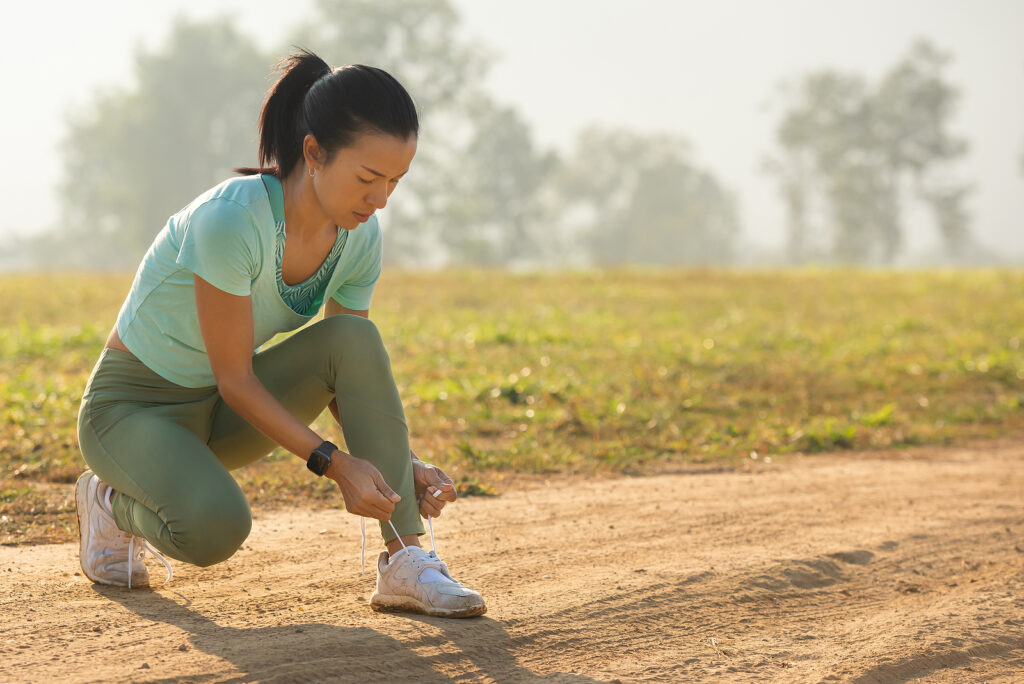 What would happen if you prayed and exercised at the same time?
What would happen if you prayed and exercised at the same time?
Admittedly, the mind-body-spirit connection is certainly not a novel idea. Balancing this trifecta is portrayed in many circles as the “holy grail” of health and wellness. I have subscribed to the belief most of my life that one informs the other — without a healthy body, my mind and spirit cannot be healthy. However, this belief system broke down for me about a year ago.
I had been struggling to find motivation for my workouts while grieving the loss of my mother. Activities, like running or biking, which were my “go-to’”s for mental and spiritual clarity, suddenly felt completely devoid of meaning. I had been in many slumps before, but this was a deeper crisis — running one more step was the most utterly useless thing I could imagine.
Sidelined from gyms and other group activities during the COVID-19 pandemic, I sought online exercise communities to help. I was encouraged to discover an endless supply of meditative and restorative content, albeit mostly secular in nature. It helped my mind, to a point, but nothing was helping restore my soul. I felt like I needed to dig a little deeper, so I became curious if the Catholic community had any exercise-oriented content available.
Basic internet searches on “running, spirit, exercise” have millions of hits, whereas adding “Catholic” into the mix starts to narrow the results. I stumbled on a book called “Running for Higher Purpose: 8 Steps to Spiritual and Physical Fitness” by Bishop Thomas John Paprocki, who had completed 24 full marathons at the time of writing the book. His book presented a framework for both new and seasoned runners to help answer the very question I struggled with: “Why am I doing this?”
Although I still struggled with my “why” for some time, I think Bishop Paprocki’s book planted a small seed in my heart. After my mother died, I noticed that going through my mother’s belongings made me feel an overwhelming need to start praying the Rosary more frequently. It was then that I had the idea to try running to chanted audio recordings of the Rosary simply as a way to just “get through it.” I stumbled on “Rosary of the Nations” by Harpa Dei choir (found here on YouTube or Spotify). It was exactly 40 minutes long, and each decade is sung in a different language: Hebrew, English, Spanish, German and French. At first, I really only chose it for the length of the recording (not too long and not too short for a good aerobic exercise).
RELATED: A Prayer for Every Mile: How My Prayer Bracelet Helped Me Finish a Half Marathon
This was the first time in my life that I entertained the idea that prayer and exercise didn’t have to be mutually exclusive events in my day, but I would be lying if I said I thought it would do anything for me. It felt silly and strange to not listen to loud playlists that beat 180 steps per minute into my brain to keep pace. I was certain I would not make any gains in performance and the experiment would die as quickly as the idea came to me.
To my surprise, the peace and mental clarity attained during these “Rosary runs” over a period of several months was truly transformative. Prayer made running feel new again, like someone was breathing new life into me. I began to look forward to my runs in a way that I hadn’t in years.
RELATED: 6 Bible Passages for Runners
After listening several times, I started using the various parts of each decade to get creative with my runs. For example, during each “Hail Mary”, I would jog during the men’s parts and walk during the women’s parts, or I would sprint the men’s parts and jog the women’s parts on days I felt more energetic. The French chants were the last decade, so I would challenge myself to pick up pace for that entire decade. Eventually, I was able to cover all the “textbook” running workouts simply by using the chants to cue me.
Interestingly enough, around the same time I started my “Rosary run” experiment, I started noticing more content available to meet this same need. I subscribe to the Hallow app, which posted two Rosary workouts by SoulCore (also available directly through their SoulCore site). The SoulCore “Rosary Run” is a guided 46 minute workout and is also structured as an interval workout like I had been doing with the Harpa Dei chant. They also offer a more relaxed “Stretching Rosary” (55 minutes). I even noticed that Peloton was throwing in some Gospel rides every now and then! (Not Catholic, I know, but Cliff Dwenger’s classes are so uplifting and worth checking out if you ever have a chance.)
RELATED: The Rosary in Two Minutes
I had assumed listening to a chanted Rosary while running would be boring and unmotivating — but in my experiment, I found this to be utterly false. I was able to run more relaxed and work on my breathing techniques, and therefore my overall fitness and pace naturally improved in a way I would never have expected. Anyone who adheres to a running routine, or struggles to keep one, will tell you that some days it is just plain difficult to muster up the energy or willpower for your workout, no matter how fast you are. One of the greatest outcomes of this prayerful running “experiment” was that after several weeks, the desire to pray became the motivator to lace up my sneakers. The need for raw “willpower” lessened after I opened up to God’s will, allowing him to work alongside me in a place that I have never thought to include him.